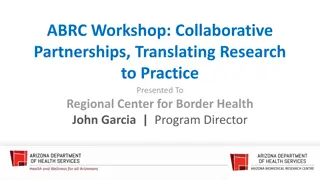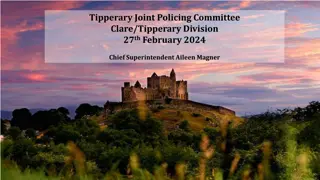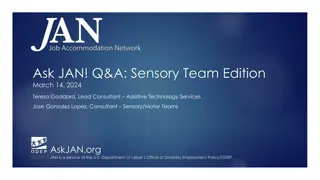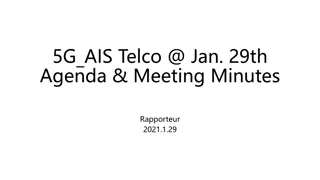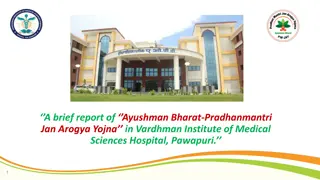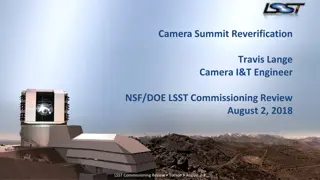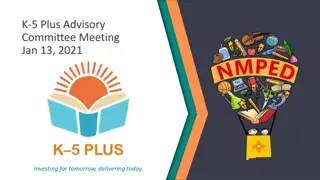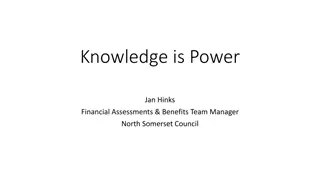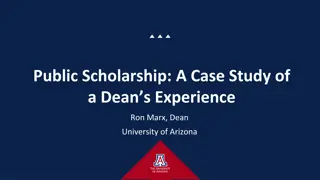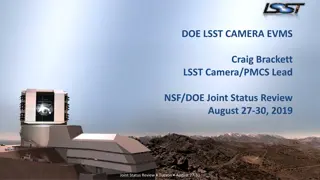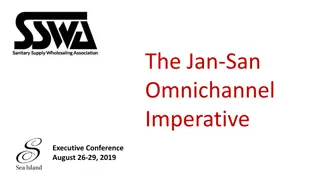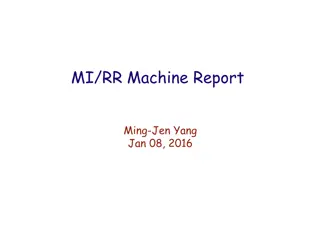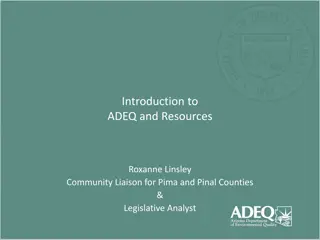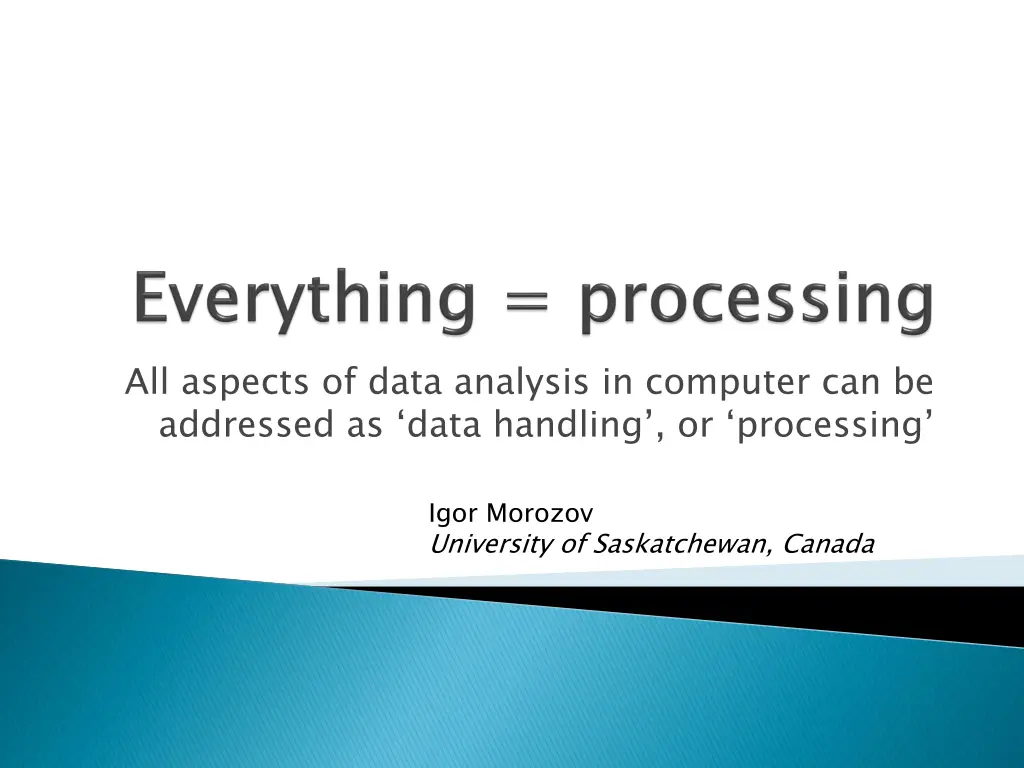
Data Analysis in Computer: Various Approaches Explored
Explore the different aspects of data analysis in computer, including data handling and processing, as discussed by Igor Morozov from University of Saskatchewan. Discover the importance of data formats, computer languages, and wide-angle seismic projects involving various techniques such as crustal reflection and ray tracing. Learn about high-throughput seismic processing tools and the general framework for efficient data processing.
Download Presentation

Please find below an Image/Link to download the presentation.
The content on the website is provided AS IS for your information and personal use only. It may not be sold, licensed, or shared on other websites without obtaining consent from the author. If you encounter any issues during the download, it is possible that the publisher has removed the file from their server.
You are allowed to download the files provided on this website for personal or commercial use, subject to the condition that they are used lawfully. All files are the property of their respective owners.
The content on the website is provided AS IS for your information and personal use only. It may not be sold, licensed, or shared on other websites without obtaining consent from the author.
E N D
Presentation Transcript
All aspects of data analysis in computer can be addressed as data handling , or processing Igor Morozov University of Saskatchewan, Canada
Data formats? Computer language? Passive or Active-source, Reflection, Refraction, or shallow data? Common user interface Concept general and powerful enough for conceivable tasks Software maintenance, expansion and collaboration Not Important Very Important
Wide-angle seismic projects (DSS, ACCRETE) Crustal reflection (Lithoprobe THO S2b) Ray tracing and modeling (ported rayinvr ) Time-lapse 3-C 3-D reflection (Weyburn) Receiver functions (SRP, CD-ROM); migration, 3-D modeling USArray processing from IRIS web services Global travel times (ported tau-p travel-time calculator) Free oscillations of the Earth and Moon (ported Mineos) Real-time seismic network 600-Texan hi-res 3-D (Hill AFB) Shallow refl./refr. and surface-wave studies (a couple landfills) 3-D finite-difference modeling (parallel on cluster) Well logs, processing and modeling Potential fields (image processing and analysis) http://seisweb.usask.ca/igeos
Batch, high-throughput seismic processing (as Disco, but multicomponent and much more general) Any data formats as needed (SEGY, SEG2, SEGP, SU, LAS, SAC, ASCII, GSE, NetDC, XML, RSS) GUI (Qt; as older versions of ProMAX) 2-D/3-D viewer (Open GL) Interfaces to GMT and Matlab/Octave Platform for porting all Seismic Unix codes Interaction with SQL databases, IRIS web services (via wget ) Operation as a web server Basically, a platform for writing, running, and maintaining seismic software C++, with lots of older C and Fortran ~300 selectable processing tools, dynamically loaded Software/documentation maintenance tools Automatic software updates and collaboration support http://seisweb.usask.ca/igeos
Once a good general framework for processing is implemented, everything can be included in it http://seisweb.usask.ca/igeos


